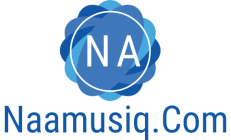Before the Internet: How Previous Generations Conducted Academic Research

A Flashback Through Time
If you were born in 1997 and later, you didn’t exist long (or at all) before there was Google. Even though there was a time when it was next to impossible to find scholarly articles and accurate information on Google, today that isn’t the case. Google is the world’s number one search engine, and millions, if not billions, of people use it every day. But have you ever wondered what it was like for students back when there was no Google— or even the internet at all? Sure there were scholarly websites at a time when Google wasn’t the most reliable site, but when you don’t have internet access at all, where do you turn?
Books
Some teachers and college professors still require their students to cite a book as a source when writing a research paper, so this was a no-brainer. Before there was the internet, students had to go to their school or local libraries and either check out or copy pages from a book to retrieve the information they needed. Though the type of book used to find information can vary, the most common book source for students was the encyclopedia. These sets of books labeled A-Z contained information on almost all topics imaginable with more detailed descriptions than a dictionary. However, not many families owned encyclopedias because they had to be updated every few years; that being said, they are still published frequently today, and encyclopedias have found a more permanent, accessible home online.
Journals
Academic journals were another means to gain information for research or curiosity purposes. Today, many academic journals can be found online via the internet, but back when there was no world wide web to access, students once again had to head to the nearest library to access these journals. Locating specific journals usually required the help of a librarian, whereas today you can use a search tool on the internet to help you find a book within a library, as opposed to accessing the article online. Magazine articles were also suitable forms of research, and many people subscribed to certain magazines in order to be able to receive information on a consistent basis.
Newspaper Articles
Newspapers are the oldest source of news and information, and they’re still around today in both physical and digital forms. Before the internet, students researching information for a history paper would have to search for older newspapers that may have contained information about a specific event. Old newspapers could be found at local libraries, the local newspaper office, at schools and universities, and even from family members who may have saved old articles. Of course, newspapers are still being published today, though most people who read the news get theirs off the internet: most prominent news publications now distribute information online as well as in print.
Usenet
Usenet is one of the oldest and most popular networks to date, predating the history of the internet itself. Usenet was a 1979 creation by two graduate students using telephone modems hooked to computers to try and send information from their computer to their friend’s computer at another campus.
The invention was successful, and thus the User’s Network (Usenet) was created and soon became popular across many college campuses in the 1980s. Usenet consisted of what is today known as discussion boards or forums, called newsgroups. There were newsgroups for almost every academic subject where students could share and exchange scholarly information.
You may be surprised to learn that it’s easy to access Usenet today. It’s not an app or a website but a network all its own, requiring a monthly subscription (after a free trial period) through a newsreader to access it. Today, Usenet has several newsgroups (over 100,000) outside of the academic realm, and you can now access photos, audio files, and videos in addition to text files.
It’s still entirely separate from the internet today, as there aren’t as many restrictions. But don’t worry— all browsing and downloading are secured with SSL encryption.
All of these research techniques can still be used today, though we now have the luxury of the internet to assist us in our searches with many of them. Fortunately, many people are still interested in traditional ways of researching, so it’s likely that these techniques won’t die out.





